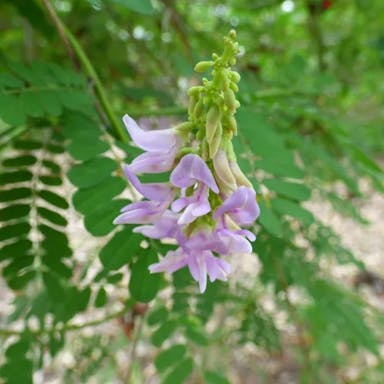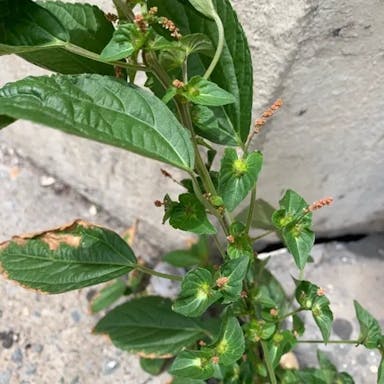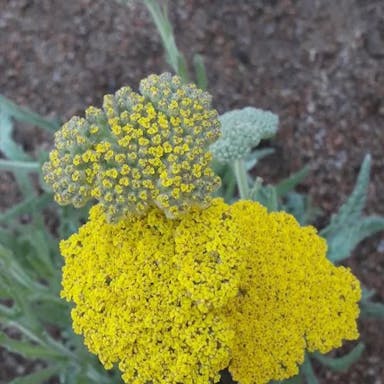Pink velvet banana plant has scientific name Musa velutina. It grows in northeast India and Myanmar. This banana looks very unique because it is pink and velvety soft. The pretty pink flowers hang down. The small 3-4 inch fruits have soft spines when young. The spines fall off as the fruits ripen. People like to grow this banana more for decoration than eating. It is easy to grow in partially shaded garden with well-drained soil and regular watering. It makes gardens look exotic and beautiful.
Pink velvet banana
- Scientific name
- Musa velutina
Basic Information
- Musaceae Family Musa Genus Pink velvet banana Species
- Musaceae > Musa > Musa velutina
- 67%
- The Completeness of This Encyclopedia
Please help us complete the encyclopedia, Terrarium is a encyclopedia service to be completed with everyone in the world. Currently, this page is 67% complete. For more information on how to contribute, please click here.
- Forb/herb
- Fruit
- Perennial
- Height
- 150cm ~ 300cm
- Flower Color
- Leaf Color
- Anthesis
- summer
- Sunlight Exposure
Full Sun Long hours of sunlight from morning to afternoon Partial Shade A location in the shade of a tree or where either the morning or afternoon is shaded Full Shade A place where there is no direct sunlight
- Hardiness Zones
This is an indicator to know to which zone each plant can winter. Knowing the zone of each plant gives you an idea of the cold temperature resistance when grown in the ground without a roof. 2: -42.7 to -40.0 3: -39.9 to -34.4 4: -34.3 to -28.9 5: -28.8 to -23.3 6: -23.2 to -17.8 7: -17.7 to -12.2 8: -12.1 to -6.7 9: -6.6 to -1.1 10: -1.0 to 4.4 11: 4.5 to 10.0
- 9
- Cold resistance
- Poor
- Heat resistance
- Good
- Habitat of origin
- India, Myanmar
- Growth Rate
- Fast
What is Pink velvet banana (Musa velutina)?
What is Pink velvet banana (Musa velutina)
Flower meaning
Sincere regard for Pink velvet banana is displayed using the language of flowers in United States. To indicate esteem, thanks, and approval. For instance, conveying profound respect for someone's character, accomplishments, or deeds.
Calendar of Pink velvet banana (Musa velutina)
Calendar
Pink velvet banana generally flowers in the United States in the summer time, to be exact from June through August. This plant's blossoms are optimum during July. The period of blooming is normally about 2-3 weeks. For a longer blooming time, supply sufficient sunlight, H2O, and well-draining earth. Steer clear of over-feeding, since it can impede blooming. Cutting dead flowers could also support ongoing flowering. #N/A
How to grow Pink velvet banana (Musa velutina)
Watering
For the Pink velvet banana plant, typically watering during the growth season every 7-10 days. Ensure the soil moisture but avoid waterlogging, allowing drying the top 1-2 inches between waterings. During dormancy, reduce watering to every 2-3 weeks for preventing rot root. According to conditions like temperature and humidity adjust watering for keeping optimal soil moisture. Avoid overwatering because it can cause problems of root rot, while underwatering can make stress on the plant.
Soil and Fertilizer
NO DATA
Sunlight and Place
Pink velvet banana needs sunshine. It can handle cold, but not freezing. Hot summer sun may burn its leaves. Draining soil and regular water are good. Too much water causes rot. Humidity is ok but long drought hurts it. Getting sun, temperature and water right keeps it healthy.
Advanced Information of Pink velvet banana (Musa velutina)
Pruning
NO DATA
Planting and Harvest
Pink velvet banana needs potting in a container with drainage holes. After planting, water well and keep damp. Mist leaves often for humidity. Don't put in direct sun or leaves may burn. Repot every 2-3 years when roots are too big. Choose soil that drains well.
Propagation
Divide the rhizomes thoroughly. Make the suckers separate completely from the parent. Soak the seeds in an excellent mix. Keep wet until the seeds sprout. Select a stem part with two nodes minimally. Put a sound leaf in the soil. Keep the dirt saturated consistently. Reap mature suckers or seeds to spread. Every technique presents a distinct approach to multiply Pink velvet banana successfully.
Pests and Diseases
Pink velvet banana is likely to have insect hazards like aphids, mites of spiders, and bugs of bananas. Feeding on areas like leaves, stems, and roots can induce decrease and yellowing of leaves. Some options include natural enemies as ladybugs or sprays made from soap. Mites grow with less dampness thus more moisture helps stop groups forming. Bugs of bananas are restricted by destroying and removing infected parts and utilizing traps of odor. Regarding illnesses, the pink velvet banana is inclined to fungal diseases as Panama and black sigatoka. These can prompt wilting, yellowing, and early leaf falling. Protective actions involve utilizing strong varieties, great cleanliness by clearing tainted debris, and evading overhead watering to lessen dampness on leaves.
Habitat of Pink velvet banana (Musa velutina)
Habitat
Toxicity of Pink velvet banana (Musa velutina)
Health Benefits
- edible
- edible
- Toxic
- No toxicity
NO DATA
Toxic for dogs and cats
NO DATA
Q&A of Pink velvet banana (Musa velutina)
- Is there a recommended way to choose?
Pink velvet banana has two main varieties: 'H3' and 'H4'. The 'H3' variety has a bright pink skin and sweet flavor. It is popular for ornamental use. The 'H4' variety is larger in size. It has a more tangy taste. People often use it for cooking. When you get seeds, make sure they look plump. They should not have any damage. For seedlings, choose ones with green leaves. Make sure they have a strong root system. It is important to buy from good sellers. This guarantees you get good varieties of Pink velvet banana.











